Cities developed alongside the invention of agriculture. Whenever enough human beings came together, division of labor increased and people were able to specialize in crafts and trades.
This article delves into some of the most astonishing cities of the ancient world.
Jericho
Jericho may be the longest standing continually occupied city in the world. The first settlements there were constructed over 11,000 years ago. A spring provided people with freshwater year round, making it possible for them to develop practices that led to the first agricultural revolution.
If a settlement of some 2,000 can be called a city, then Jericho was the site of the world’s first and largest city in the 8th millennium BC.
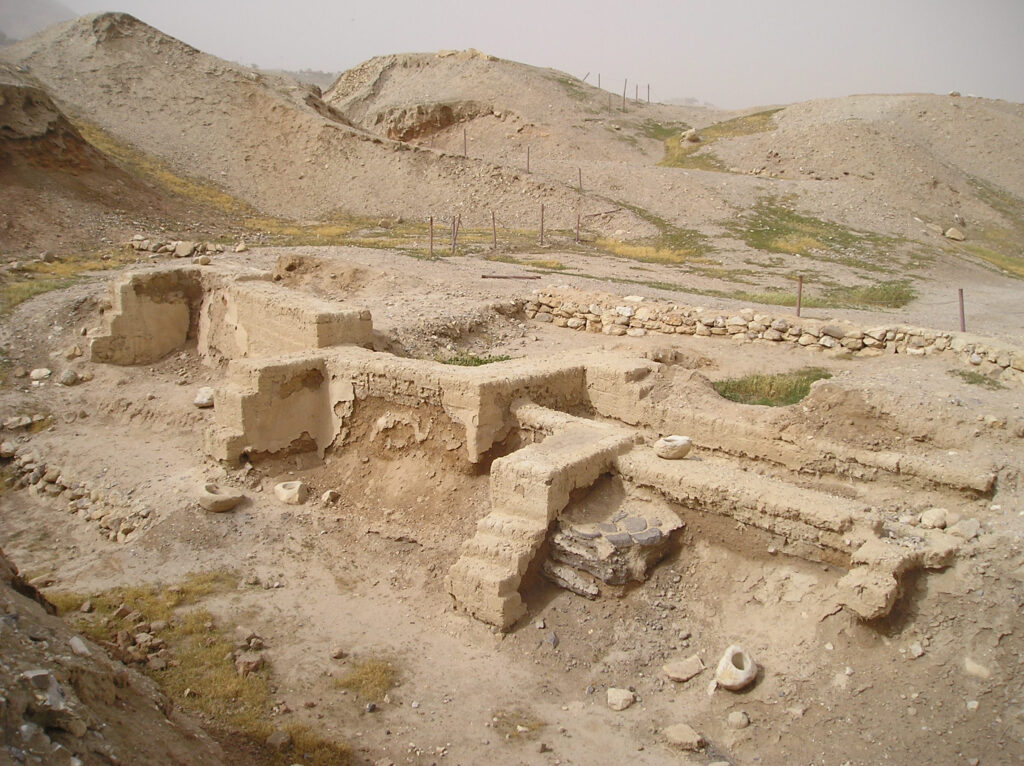
Archaeologists often refer to ancient Jericho and similar sites as proto-cities.
Ancient people constructed mud-brick buildings on foundations of stone, usually grouped around a central courtyard. Deceased family members were often interred beneath the floors.
They also constructed the Tower of Jericho around 8,000 BC. It stood 28 feet tall and contained stone steps within. Archeologists have estimated that the construction of the tower required 11,000 working days.
Uruk
Founded over seven thousand years ago, Uruk was one of the world’s first proto-cities and eventually grew to become the largest city of its era.
The civilization that grew there predates ancient Sumeria and the cuneiform writing system that eventually developed among these city dwellers.
Uruk had a population of around 5,000 people in 4,000 BC. By 3,000 BC, there were closer to 50,000 city residents and roughly 40,000 people living in the surrounding area, making it the largest urban area the world had yet seen.
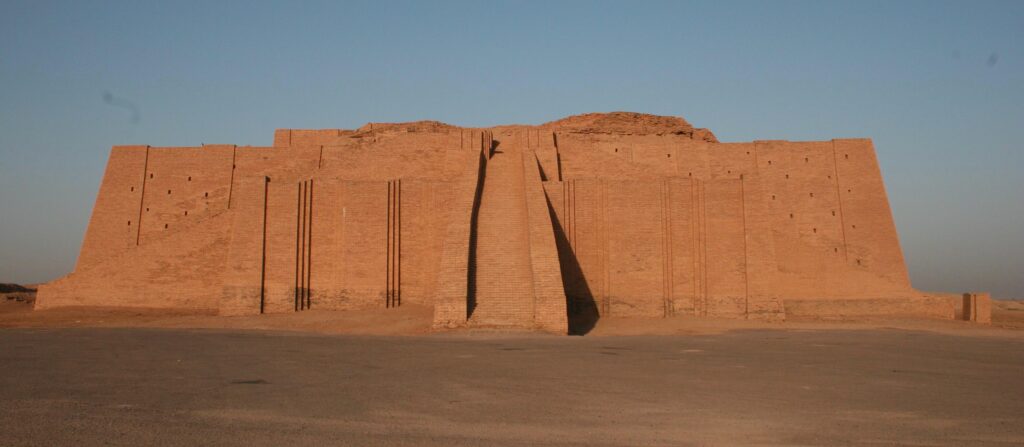
Uruk had a sophisticated system of canals and distinct districts where members of various professions lived in comfortable homes built around central courtyards.
Huge ziggurats were constructed in honor of local gods. These temples were the largest monuments that humans had ever built.
This city endured for millennia, inhabited from its founding until it finally declined around 300 AD.
Memphis
Memphis was the political capital and religious center of Ancient Egypt during the Old Kingdom for more than six consecutive dynasties. Its oldest known name was Inebu-hedj, so called for its white walls. It later became known as Men-nefer, meaning The Enduring and Beautiful.
This period of Egyptian history saw the construction of its most astonishing monuments, including the Giza Pyramid complex located just outside of the ancient city of Memphis.
The Great Pyramid of Giza is the largest pyramid in the world and held the distinction of being the tallest human-made structure for nearly four thousand years. It was originally over 480 feet tall.
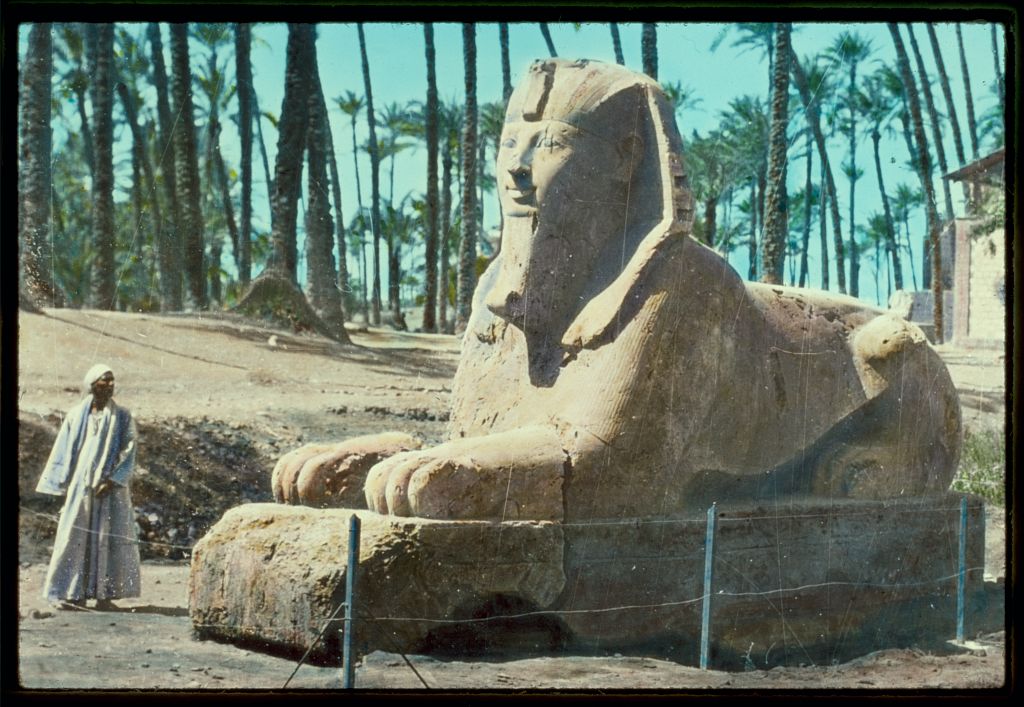
Located at the entrance to the Nile River Valley, Memphis was continuously inhabited for many thousands of years. It acted as the seat of pharaohs for centuries and remained a center of commerce and religion even when Egypt’s capital was relocated upriver to Thebes.
Memphis was said to be under the special protection of Ptah. This god occupied various roles throughout history. He probably began as a fertility god and eventually became known as the god of craftsmen. During the Early Dynastic Period, he was called the Lord of Truth and Creator of the World.
Estimates of the population of Memphis vary widely. It may have had as many as 60,000 inhabitants by 2000 BC, making it the largest city in the world at that time.
It was already an established city when the First Dynasty began in 3100 BC, and despite being raided by the Persians, it was still an important city in 331 BC, when Alexander the Great chose it as the place for his coronation as Pharaoh. After Alexander was killed in Babylon, Ptolemy ordered that his body be returned to Memphis.
The Ptolemaic Decree of Memphis, issued in 196 BC, led to the creation of the Rosetta Stone. This famous artifact that made it possible for historians to decipher Ancient Egyptian.
By the 7th century, Memphis had fallen to ruin.
Athens
Athens is another of the world’s oldest cities. It’s been continually inhabited for over 5,000 years.
Named for the Goddess Athena, this city was an important military location for the Mycenaean civilization as early as 1400 BC.
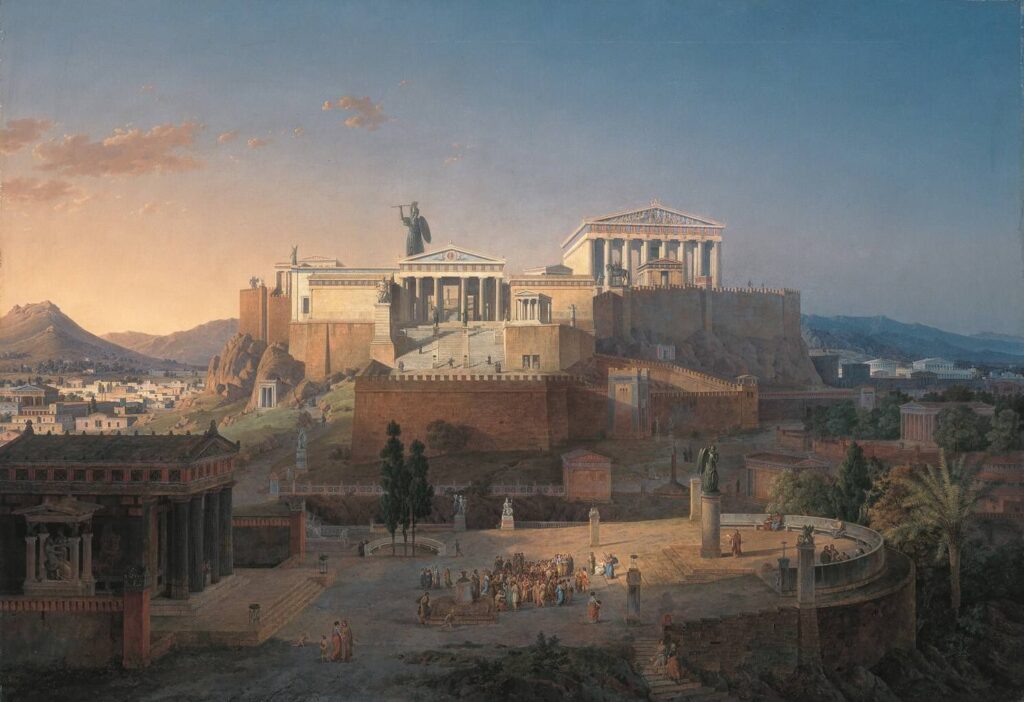
Athens was one of the first city-states to operate as a democracy. This democracy came about over the course of the 6th century BC. Citizens were entitled to participate in the Athenian process of legislature and executive bills.
Only men who had been born in Athens and later completed their military training were considered full citizens with the right to vote. Athenian society was highly patriarchal, and women were barred from participating in government.
Yinxu
The world’s largest city around 1300 BC was probably Yinxu, which was the capital city of the Shang dynasty.
Today, this site is the largest archeological site in China. Evidence of the earliest writing systems in China were first unearthed there, along with a rich array of art and handcrafts.

Archeologists also found evidence of human sacrifice, including 16 slaves buried alongside an ancient queen. Dogs and horses were buried alongside powerful political figures as well.
Historians estimate that Yinxu may have had as many as 120,000 citizens.
Rome
Rome may have been the first city in the world to host one million people at one time. The contender for that milestone is Alexandria, which was founded by Alexander the Great in 331 BC and quickly grew to rival Rome in size and significance.
According to legend, Rome was founded in 753 BC. It was inhabited long before then, however – as early as the 10th century BC. People were already creating pottery and building stone walls there in the 9th century BC.

Roman architecture flourished from 500 BC through 125 AD. Roman concrete was used to create astonishing arches and domes, making it possible for Romans to create marvels such as the Colosseum and the Pantheon.
At its height, the population of Rome was subsidized and supported by taxes from the rest of the empire. As much as one quarter of the grain needed to sustain its citizens was provided by the central government.
By the start of the 2nd century AD, Rome may have housed between two and three million people. The population declined quickly after that, dipping down to half a million by the year 273 AD.
Teotihuacan
At the height of its power, this ancient city was the largest in all of Mesoamerica with a population of between 100,000 and 200,000 people. At the time, it was the sixth largest city in the entire world.
Often mistakenly conflated with the Aztecs or Mexica people due to its proximity to Mexico City, Teotihuacan was built over one thousand years before they arrived in the mountains of what is now central Mexico. It was abandoned centuries before the Mexica people migrated to the area.
Teotihuacan was founded around the year 100 BC, with its major monuments being continually constructed through the middle of the 3rd century AD. It began to decline in the 6th century and was fully abandoned shortly thereafter.
Nahua migrants, the ancestors of the Aztecs, arrived in the 13th century. They were so awed by the ruins that they named the place Teotihuacan, meaning ‘birthplace of the gods’.
At its height, Teotihuacan spanned eight square miles. Its central road, known today as the Avenue of the Dead, is 45 meters wide and stretches four kilometers from end to end.
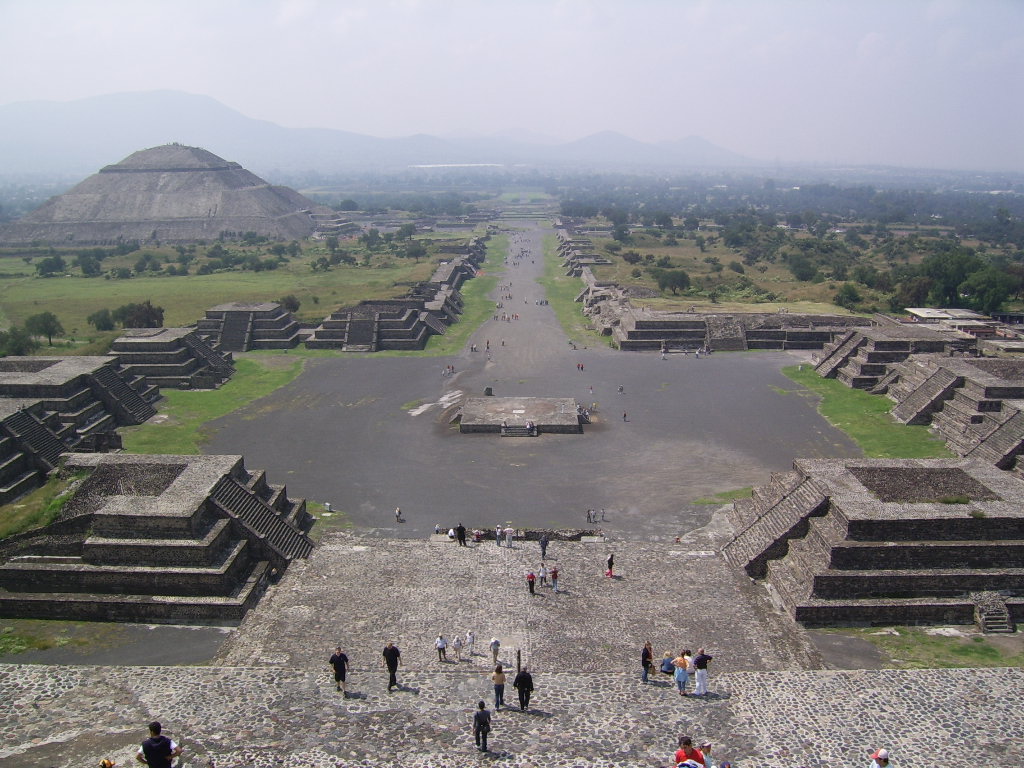
The largest and most famous monuments of Teotihuacan are the Pyramid of the Sun and the Pyramid of the Moon. Measuring 730 feet across and 233 feet high, the Pyramid of the Sun is the third-largest pyramid in the world. It was once even higher, with an altar located at its peak, but that portion of the structure did not survive to the present day.
Like other Mesoamerican pyramids, these famous monuments were once coated in plaster and painted with brilliantly colored murals. Today, only their stone skeletons remain. There are still well preserved murals present in other parts of the city, however.
The vast majority of the valley’s population lived there in the city in multi-floor compounds. The walls of these apartment complexes were painted with complex and richly colored murals.
Red dominated the city, accented by blue and green and yellow. Murals often depicted the two principal deities of Teotihuacan, an agricultural goddess and a storm god holding a lightning bolt. Animals such as jaguars, owls, and coyotes were often depicted as well.
Teotihuacan was a multiethnic city. As in other major cities, immigrants who spoke the same language often clustered together, creating distinct neighborhoods.
There is no evidence of a monarch, which sets Teotihuacan apart from other cities of its time. It seems that this city was ruled by a council, supported by a robust upper class and a middle class that was considerably more prosperous than most of their contemporaries around the world.
The people of Teotihuacan traded with civilizations all over Mesoamerica, exporting primarily obsidian tools. Although they traded extensively with the Maya, who by that time had developed a written language, there is no evidence of widespread literacy in Teotihuacan.
As in other Mesoamerican cities, evidence suggests that captive warriors were ritualistically sacrificed. The residents of Teotihuacan appear to have sacrificed animals as well. Archeologists have unearthed the bones of wolves, golden eagles, mountain lions, and rattlesnakes.
The wonders of Teotihuacan are still being unearthed. In sealed-off passageways beneath the old city, archeologists have discovered miniature landscapes with lakes of liquid mercury and ceilings of powdered pyrite stars. These hidden chambers are a treasure trove of carved crystals, statues, and gems.
Kaifeng
Kaifeng was another capital of ancient China. It was most likely the largest city in the world in the year 1000 AD, with a population of over 700,000 people.
A city was first founded there in 364 BC, and many canals were constructed to support its infrastructure, but the city of Daliang was destroyed only a century after it was founded.
Kaifeng was reconstructed around 178 BC, when the Prince of Liang adopted it as his place of residence. It was restored with care, and ornamental gardens flourished alongside its many canals. The city became known as a place of refuge for artists and musicians.
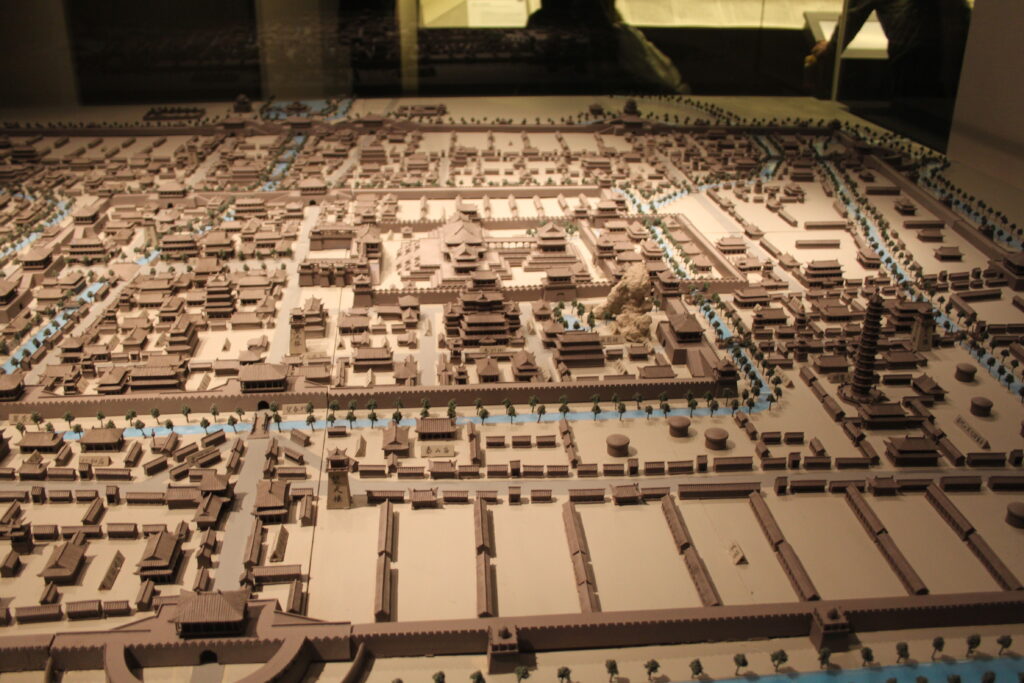
In the 7th century, Kaifeng became a major commercial center when it was connected to the Grand Canal, the world’s longest artificial river.
Called Dongjing or Bianjing at the time, Kaifeng became the largest and most prosperous city in China. The Iron Pagoda was constructed in 1049 and still stands today.
By the 11th century, Kaifeng was the largest city in the world. It stood at the intersection of four important canals, making it a well established industrial and commercial center.
This era of prosperity ended in 1127 when the city fell to invaders and the outer rings of the city were abandoned.
Kaifeng is still inhabited today, with a population of five million.
Beijing
By 1500, Beijing was the largest city in the world with a population of one million people.
Humans and their ancestors have inhabited the area around Beijing for hundreds of thousands of years.
The first city in Beijing was founded in 1045 BC. Jicheng was the capital city of the state of Ji. It was later captured by the state of Yan and used by them as a capital as well. It remained a prefectural capital after the First Emperor unified China in 221 BC.
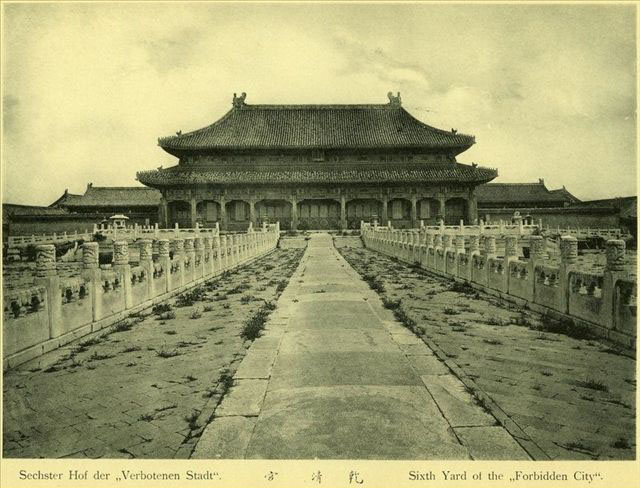
When China was unified for a second time in 581, this city became the northern terminus of the Grand Canal.
The imperial residence called the Forbidden City was constructed between 1406 and 1420 and the city became the official capital of the Ming Dynasty. It grew to become one of the largest cities in the world and retained that distinction for most of the 15th, 16th, 17th, and 18th centuries.
Over 22 million people live in Beijing today.

